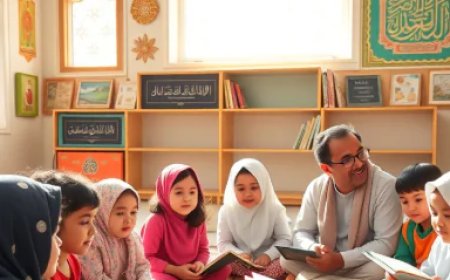Nature’s Time Capsule: Uncovering the Past Through Cooperative Learning Roles
Explore history through cooperative learning! "Nature’s Time Capsule" engages students in uncovering the past using interactive team roles and discovery.

In a world constantly speeding forward, nature stands as a quiet, enduring witness to the unfolding of time. From ancient tree rings to layers of sedimentary rock, Earth has preserved records of its past in what many refer to as Natures Time Capsule. These natural archivesbe it fossils trapped in amber, glacial ice cores, or coral reefstell intricate stories of climate, species, ecosystems, and evolution. But how can we decode these stories effectively, especially in educational settings? The answer lies in adopting practiceswithin the classroom and fieldwork environments.
Unlocking the Capsule Nature's Silent Storytellers
Nature doesnt shout its stories; it whispers them through subtle signs and gradual changes. Consider permafrost in the Arctica frozen layer of soil that has preserved prehistoric pollen, bones, and microorganisms for thousands of years. Or take tree rings, which chronicle climate conditions year by year, or ice cores that trap gases from eras long gone. These natural phenomena serve as time capsules that demand collaborative inquiry to understand fully.
However, the data extracted from these sources often requires a multidisciplinary approach to interpret. This is where itbecomes not only helpful but essential. By dividing tasks among team membersdata collectors, analyzers, presenters, and reviewersstudents or researchers can break down complex problems into manageable components while maintaining a shared goal: understanding natures memory.
Power of Structured Collaboration
In traditional classroom settings, students often learn passively, absorbing information without fully engaging with it. In contrast, cooperative learning transforms students from passive recipients to active investigators. It brings together diverse perspectives, enhances problem-solving, and strengthens communication. When applied to the study of natures time capsules, this approach fosters a more immersive and investigative experience.
Take, for example, a classroom activity where students examine sediment cores from a local lake to determine historical water quality. In this activity, learners can be assigned specific cooperative learning roles such as:
-
The Researcher, who gathers background information on local geology and historical land use.
-
The Analyzer, which interprets the chemical and biological indicators in the sediment.
-
The Recorder, who documents the findings.
-
The Presenter, who communicates the groups conclusions to the class.
Each role is critical, and together they simulate the collaboration seen in real-world scientific investigations.
Mirror of the Scientific Process
Science, by its very nature, is a collective endeavor. Whether its paleontologists unearthing dinosaur bones or climatologists drilling ice cores in Antarctica, these efforts are rarely solo missions. Instead, they are marked by synergy, specialization, and an appreciation of each team members contribution. This mirrors the educational value of cooperative learning, where each participant plays an integral part in achieving a common goal.
Natures time capsules dont give up their secrets easily. Ice cores, for instance, contain compressed layers of snow and gas bubbles that provide clues about Earths atmosphere over hundreds of thousands of years. Analyzing these layers involves physics, chemistry, climatology, and historical analysis. Only through team-based strategies can students effectively simulate this complexity in a classroom or research context.
Fieldwork and Real-World Application
Implementingoutside the classroomsuch as during field trips to natural parks, caves, or lakesoffers even greater potential for engagement. Students can act as environmental detectives, collecting samples and forming hypotheses based on their findings. Roles can be assigned ahead of time, ensuring that every student has a responsibility aligned with their skills and interests.
For example, when investigating a peat bog (another natural time capsule that preserves organic matter), roles may include:
-
The Sample Collector, who gathers peat samples for analysis.
-
The Biologist, who identifies preserved plant or insect remains.
-
The Chemist, who tests for carbon dating or pH levels.
-
The Ecologistwho draws connections between findings and environmental history.
By involving learners in these immersive, cooperative settings, we provide them with more than just knowledgewe offer them a framework for inquiry, empathy, and interdependence.
Cooperative Learning Roles-Orientedness in Curriculum Design
Designing an educational curriculum thatensures that learning is not only content-rich but also process-driven. Its not just about what students learn but how they learn it. When teaching about natures time capsules, the curriculum must encourage role-based collaboration to foster deeper engagement and long-term retention.
This orientation toward cooperative learning facilitates essential 21st-century skills such as leadership, accountability, adaptability, and innovation. For example, students tasked with explaining the historical implications of fossilized pollen grains must work with those analyzing geographical data or atmospheric conditions. The synthesis of their knowledge leads to more comprehensive and nuanced interpretations.
Rather than isolating knowledge within silos, cooperation breaks down barriers between disciplines and encourages integration. In the context of studying natural time capsules, this is vital. Natures records are multifaceted, and understanding them requires a similarly multifaceted approach.
Natures Classroom: Fostering Environmental Stewardship
Beyond academic benefits, cooperative learning in the context of natural history education promotes environmental consciousness. When students actively participate in uncovering natures time capsules, they develop a personal connection to the Earths historyand its future. They see firsthand the impact of climate change in thinning glacial layers or recognize past biodiversity through fossil records.
These experiences often translate into greater environmental stewardship. When learners see themselves as contributors in a cooperative quest for knowledge, they are more likely to take ownership of their learning and the planets well-being.
Future of Learning Lies in the Past
As the world grapples with pressing environmental challenges, understanding natures long memory has never been more important. The clues locked in ice, soil, trees, and rocks serve as warnings, lessons, and opportunities. By employing educators, educators can cultivate the skills and mindsets students need to decode these lessons and apply them toward sustainable solutions.
Incorporating natures time capsules into the curriculumthrough both theory and practiceoffers a transformative educational experience. It teaches students to value evidence, to question assumptions, and most importantly, to work together. It redefines success not as individual achievement, but as collective insight.
Conclusion
In sum, Natures Time Capsule is not just a poetic metaphor; it's a practical framework for multidisciplinary exploration. Whether in a classroom, lab, or field, unlocking these natural archives demands curiosity, rigor, and collaboration. By embedding cooperative learning roles into the heart of this process, educators empower students to become active participants in both learning and conservation. In doing so, they not only reveal the Earths pastthey help shape its future.


































